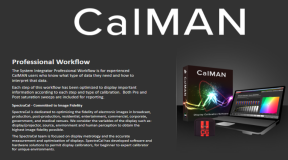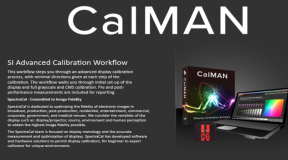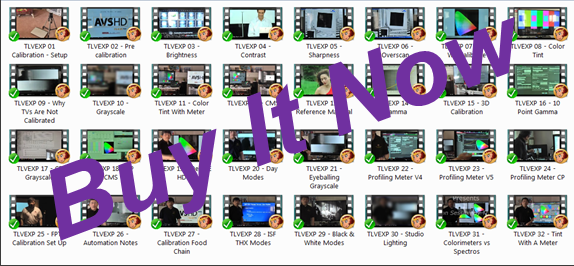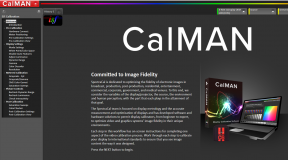Audio System:
Toshiba CN36G97 – The brochure says the on board audio is 20 watts and the set also has a sub woofer. There is a center channel input, but no one in their right mind would use it. However in my poor man space limited system, the center channel option comes in handy. No powered outputs like the Proscan or the RCA. The service manual says the power is 10 watts per speaker.
Toshiba TP61H95 – The on board audio is 14 watts and there is a center channel option just like the tube set. The audio is not really meant to be overpowering. It is serviceable for listening to news. I personally keep the speakers turned off at all times. There is a surround enhancement and other gimmicky features.
Panasonic PC29XF10A – Internal audio rated at 20 watts which is even more than the RCA. The is also an adjustable surround expander.
Proscan PS34190 – The ultimate in audio means the inclusion of Dolby Pro Logic as a feature although in perhaps five years (7?), an AC-3 decoder will be on board to handle the audio duties. There are eight different audio modes and a variety of speaker settings to create a full blown audio experience on the cheap. There is also a graphic equalizer and a test tone generator. The set is capable of powering all five speakers alone if necessary, but not recommended for any serious viewing. I suspect the total audio power is around 20 watts for the front and 10 to the back. In a small room, it sounds very adequate.
Pioneer SD-P5071 – Just a pair of two watt speakers and plain stereo and SAP. No sound adjustments are available except the volume control. The company assumption is that people who use this set will obviously have an audio system capable of delivering far superior sound. Correct assumption, but forgotten in their more expensive sets. Why put a Pro Logic decoder (useless) on board?
RCA 46729BA – More sophisticated Hughes SRS (Sound Retrieval System) sound system with full audio adjustments and sound expansion modes. The internal amplification is 10 watts and a matrixed surround decoder is also built in. The audio features are excessive, but they improve the set’s performance if the unit is a stand alone in a typical family home. Advantage RCA.
Image Size / Quality:
Toshiba CN36G97 – The 36” tube creates a very nice image once the set has gone through the initial calibration process. Depending on the image, some of the stuff looks nearly three dimensional. I finally took the time to contact the people at Super Calibrations in the northeast end of town and they come over to do the color calibration. After nine years of reading about it and searching for the holy grail of pictures, I finally paid the $175 to get the job done. I talked the person down from the normal $225 price tag that he charges since I had the service menu already and I offered some minimal assistance during the 30 minute procedure. I finally got a good look at the Philips color analyzer and the color pattern generator. I could probably have learned how to use the unit within a few hours. The colors are pretty much dead on D6500 now. He went up and down the gray scale and the set fell into line pretty quickly. While it was not D6500 across the entire gray scale … it never deviated by more than 50 degrees at any setting. I never imagined how different it could look and how it compared to me doing it blindly by eye. I was way off, but now I have the template with which to compare all other TV sets. No particular colour is over saturated.
Toshiba TP61H95 – The 61” image is much smaller than I thought it would be. This means that it is far more manageable to watch. The line doubling makes it the perfect set to sit some eight feet from the image. It is much more colourful and sharper than I could have imagined and I am very pleased with the image. The set will display a 16:9 image equivalent to a 56” set like the Panasonic HD ready set. The HD capability of the set seems to closely parallel the performance of the TP65H80 widescreen set. Other than the aspect ratio, the insides are the same. The 16:9 unit has been reviewed to display a maximum of 900 real lines of horizontal resolution with 1080I images. This is well short of the full HDTV spec which hovers around 1440 lines, but for a first generation unit, it will still impress. The set also cannot display the full vertical resolution of 1080I as it blends lines. The set does something in the range of 960i. I have also learned that this set does not have a 16:9 mode built in. When an HD signal is inputted, it is displayed like the anamorphic DVD’s in a stretched format. Only a manual adjustment can correct this. This leads to a plethora of convergence problems though. Not to worry though as the separate set up memory can deal with this problem.
Panasonic PC29XF10A – The smallest image of the group at 27″ and you would think it has the sharpest picture. This is close, but it is not always the case. The properly calibrated RCA projection unit usually displays far more pleasing and even sharper images than this set.
Proscan PS34190 – With the height of a 27″ set, but much wider. The scanline free image will take some time to get used to, but it is getting better and better. Playback material plays a significant factor in how this one looks. There are some discs that look good on regular sets, but horrible on this set. This set is also pseudo HDTV compatible as well as SVGA compatible so it can deliver images that are better than any we have seen before. While in the long run, it won’t stand a chance against the real HDTV display devices, this unit is definitely capable of delivering an image that is better than anything seen previously. The internal line doubler may not be one of those Runco or Faroudja devices, but it is certainly workable. The name brand devices would simply look that much better. (The difference is like that between the entry level Laserdisc players and the top line units.) I cannot complain though as a good disc will still yield a truly filmic experience. I created a cheap SVGA cable to see how the high definition input worked and indeed it does work although the result plays tricks with the set itself by causing the unit to reset all picture settings to the zero point. The set also starts and reboots itself to match the 800 x 600 image of the computer, but it somehow only manages to show something in the order of 500 vertical lines and about 700 horizontal lines. The line doubler works wonders in this mode and the resulting images are indeed sharper than Laserdisc or anything else in the NTSC realm. Photo CD’s look slightly less sharp compared to a 14″ monitor, but this image is upwards of 27 inches. The noninterlaced image is just as smooth as the computer monitors, but we are able to change image parameters that cannot usually be changed on dedicated monitors. Funny as it may seem, this set turns out to be far more HDTV compatible than I had ever dreamed possible. It will take the 1080i signal and display it without any major problems. Actually, this is not the case. I plugged in the Starchoice HD decoder into the unit and the 1080i was not viewable, but something similar to 540p was displayed. I flicked the back of the decoder box to 480P and the image filled out the entire screen with no jitter at all. You could tell that the detail in the Irish country side clip was missing. The bricks on the walls of the churches were melded together. So at least the set is 480 P capable. Funny that the brightness had to be pumped up to 100% to get a viewable image.





